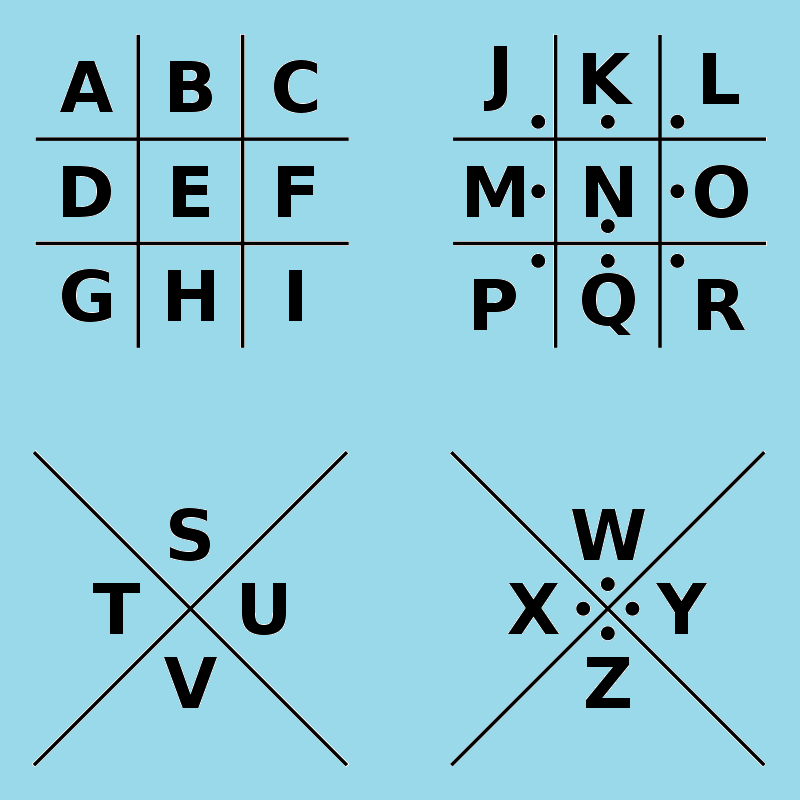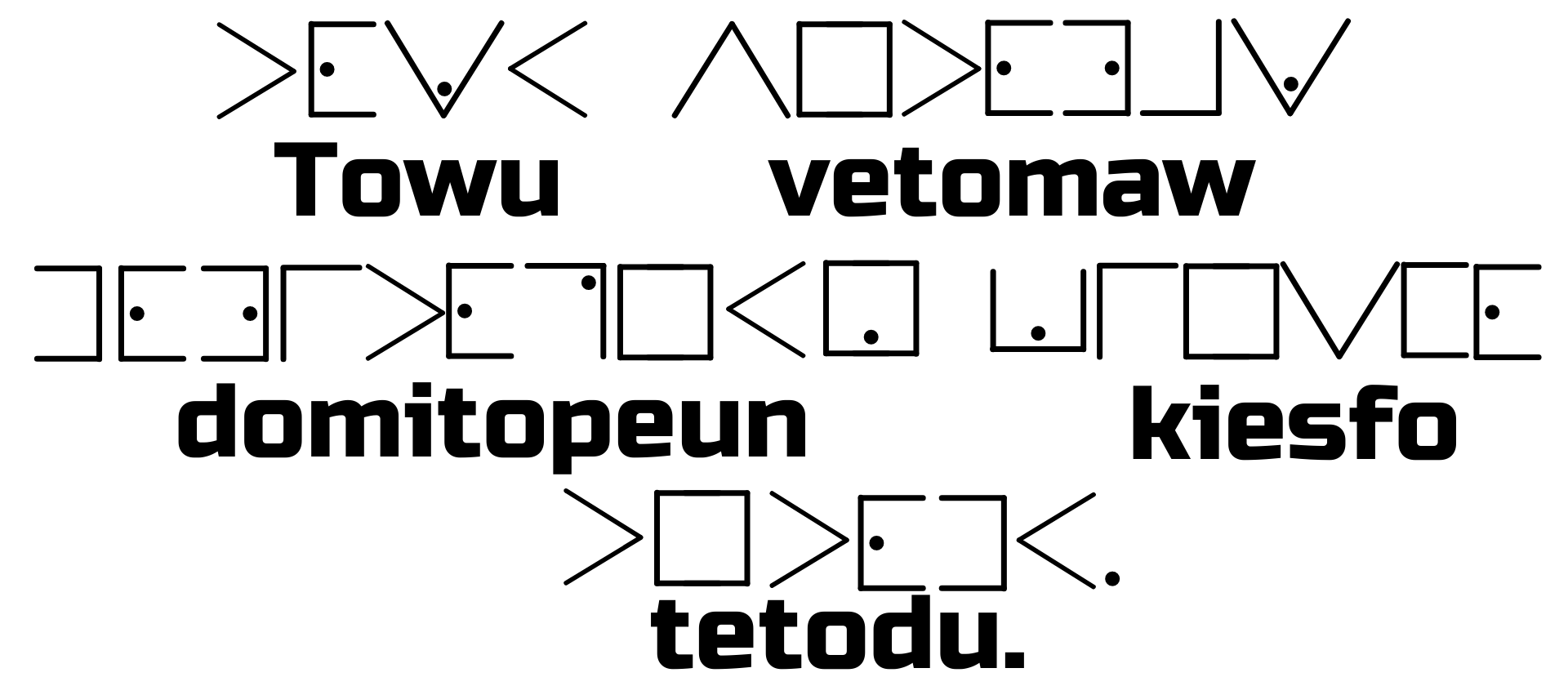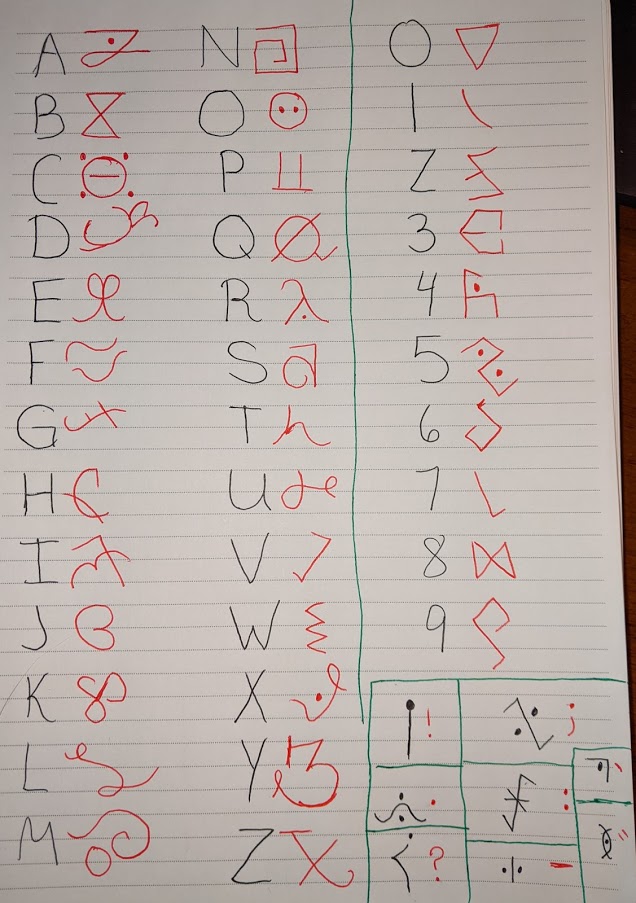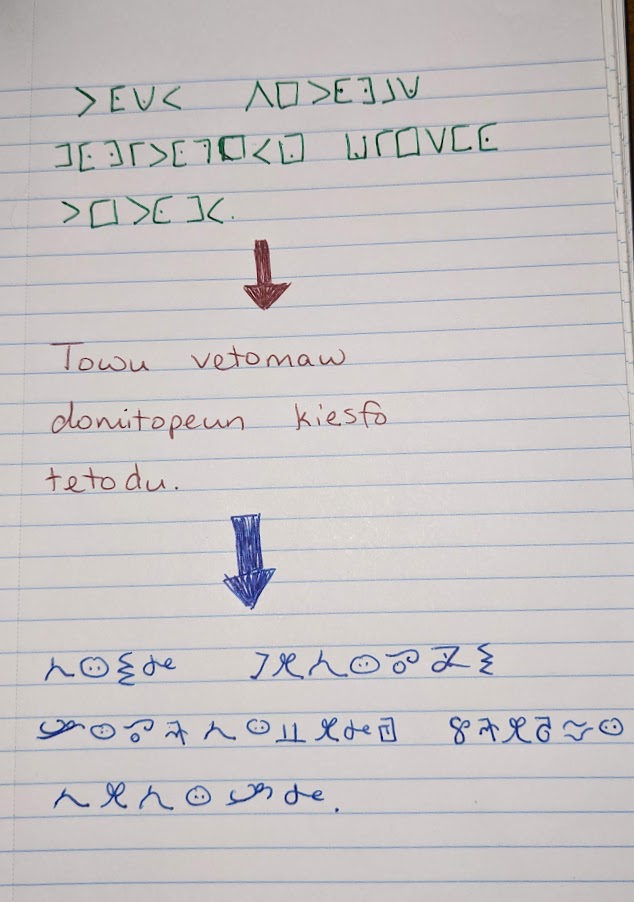The Language of Ezosa (e'zoe'sa)
Ezosa is a language connected the fae, but has since died out over nine hundred years ago, when the fae culture began to faction off into different cultures of the elves, pixies, nymphs, dryads, and ents. This language is considered a truly dead language that cannot be spoken by mortals, only written.
 For those who happen to study the language, they find it harder to translate the words to people as they cannot read the language aloud for those unable to acquire a copy of the written document, journal, note, etc. (i.e. over a conference call or a skype meeting). Per this issue, teenagers, students, professionals, and so on have sometimes found themselves deciphering the language from actual ciphers. The most common form of this is the masonic, or pigpen cipher, which can be a bit tedious to translate.
For those who happen to study the language, they find it harder to translate the words to people as they cannot read the language aloud for those unable to acquire a copy of the written document, journal, note, etc. (i.e. over a conference call or a skype meeting). Per this issue, teenagers, students, professionals, and so on have sometimes found themselves deciphering the language from actual ciphers. The most common form of this is the masonic, or pigpen cipher, which can be a bit tedious to translate.

by Anomie (wikimedia)

Table of Contents
Author Note
The words that are available in the dictionary above are the only words that author-chan currently knows. More words will be added in the future.
Quick Facts
Natively Known As:
Ezosa
Sentence Example:
Towu vetomaw domitopeun kiesfo tetodu. = There will be bloodshed.
Ezosa Word Order:
Shed blood there will be.



Comments